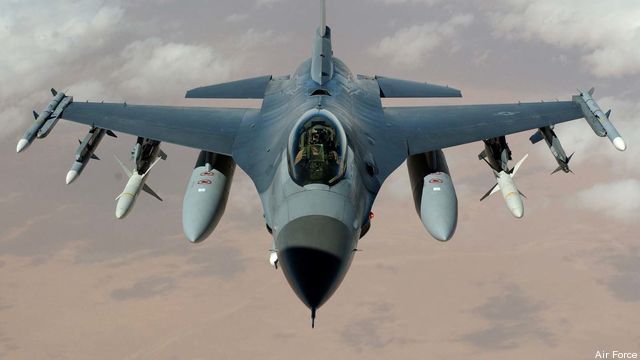
F-16
WASHINGTON: Air Force Chief of Staff Gen. CQ Brown is launching a study, in tandem with DoD’s Cost Assessment and Program Evaluation (CAPE), on the service’s future mix of tactical aircraft.
“This will help inform the decisions that I think I need to make internal to the Air Force, and what I would recommend that force mix might be,” Brown told the Defense Writers Group late this afternoon. “Now, I will also tell you I don’t think that everybody’s going to exactly agree with what I say. But I want to actually have a starting point as a point of departure, a point of dialogue.”
The goal would be to finalize the study in time to reflect its conclusions in the Air Force’s 2023 budget request, he said. “In the budget for FY 23, that’s where I see that we’ll really make some key decisions.”
The study will include a “clean sheet design” for a new “four-and-a-half-gen or fifth-gen-minus” fighter to replace the F-16, Brown elaborated. Rather than simply buy new F-16s, he said, “I want to be able to build something new and different, that’s not the F 16 — that has some of those capabilities, but gets there faster and uses some of our digital approach.”
Brown explained that the idea would be to build on the lessons learned in digital engineering for the “e-series” T-7A Red Hawk trainer, and the Next-Generation Air Dominance (NGAD). In particular, Brown said he would like to see any F-16 replacement sport “open-mission systems” that would allow near-real-time software updates to meet new threats.
The idea of the tactical aircraft (TacAir) study is “to look at what is the right force mix,” he said, explaining that the service needs fifth-generation fighters such as the F-35; it needs NGAD “to remain competitive against our adversaries;” and, it needs capabilities for the “low-end fight.”
Importantly, Brown stressed, the study will be based on “facts” and “not just opinions.” To ensure the service gets the right answers “requires some modeling and simulation and analysis, and that’s what I plan to do here over the coming months,” he said.
He added that it is also important that the study be done with the help of CAPE to bring in the perspective of the Office of Secretary of Defense before the service makes any decisions. “Naturally if I just do the Air Force study, it’s just an Air Force study,” he said.
386 Squadrons?
In addition, Brown said, OSD input will help ensure the TacAir study is able to inform Defense Secretary Lloyd Austin’s new global force posture study, and vice-versa, despite the fact that the two efforts are happening under different timelines.
“I think the dialogue back and forth between the two will help shape the Global Posture Review; at the same time, the Global Posture Review will help shape our TacAir study based on the priorities the department has laid out,” he said. “I don’t want to do my TacAir study in a vacuum. It would be naive of me to do that.”
Brown suggested that the study might drop the long-touted service goal of 386 squadrons, reflecting his remarks in October that it is the capabilities that 386 number represents that really count. This “modeling and simulation to look at what is the right force mix that gives me the most capability” is so important, he said. “I want to get as close as I can to 386 capability with the force size that I have, with the dollars we have available, and make that case.”
In a ‘world first,’ DARPA project demonstrates AI dogfighting in real jet
“The potential for machine learning in aviation, whether military or civil, is enormous,” said Air Force Col. James Valpiani. “And these fundamental questions of how do we do it, how do we do it safely, how do we train them, are the questions that we are trying to get after.”


























